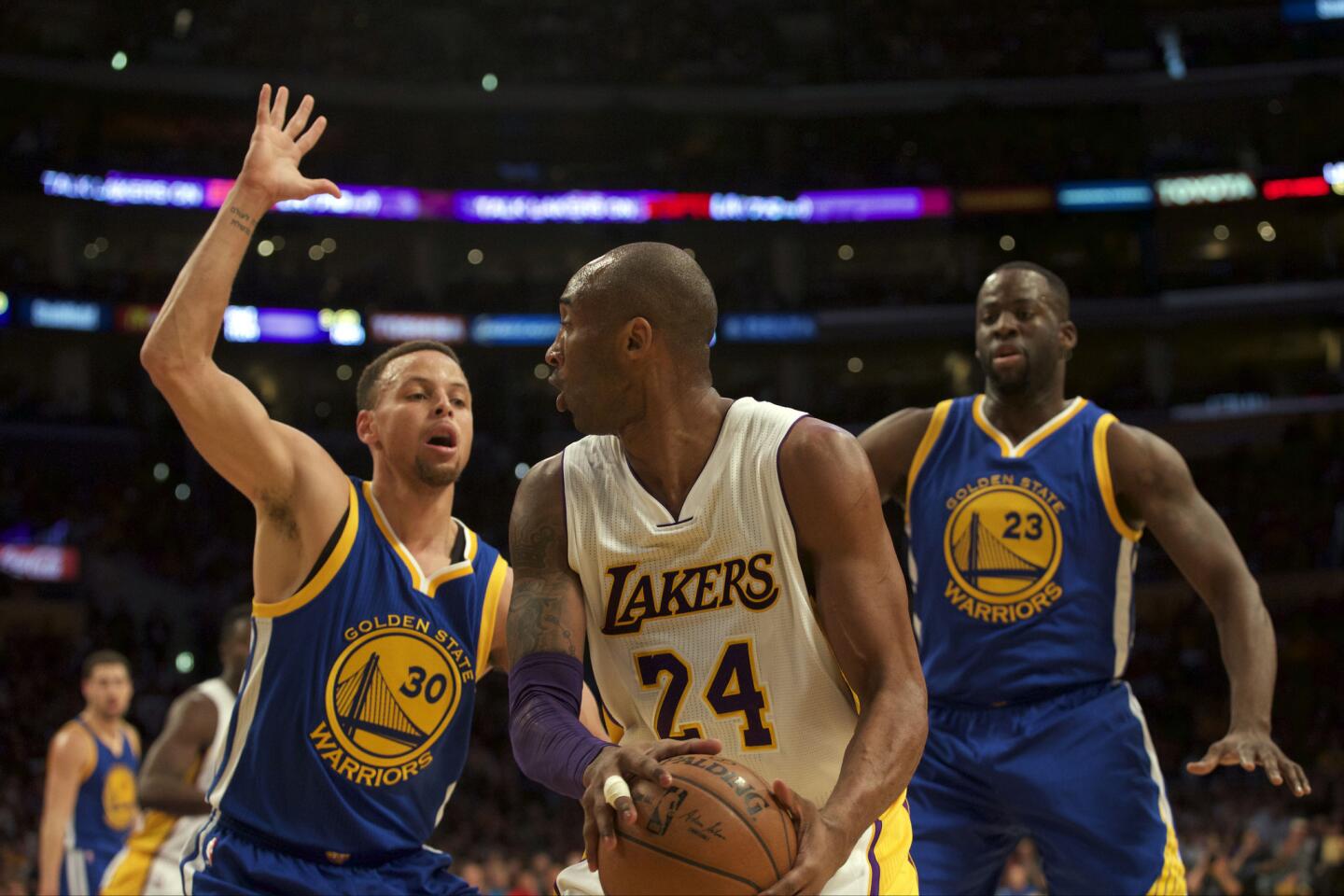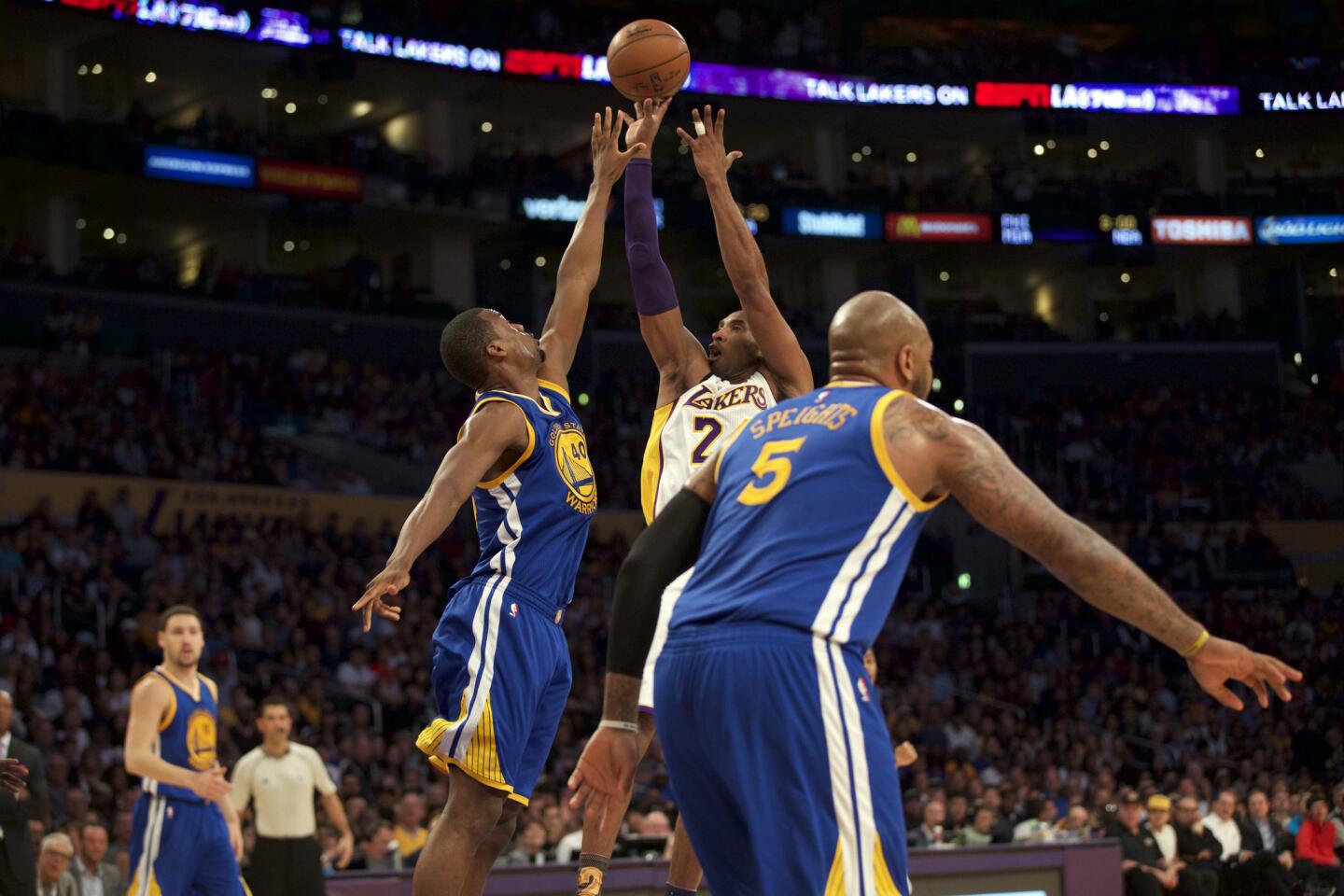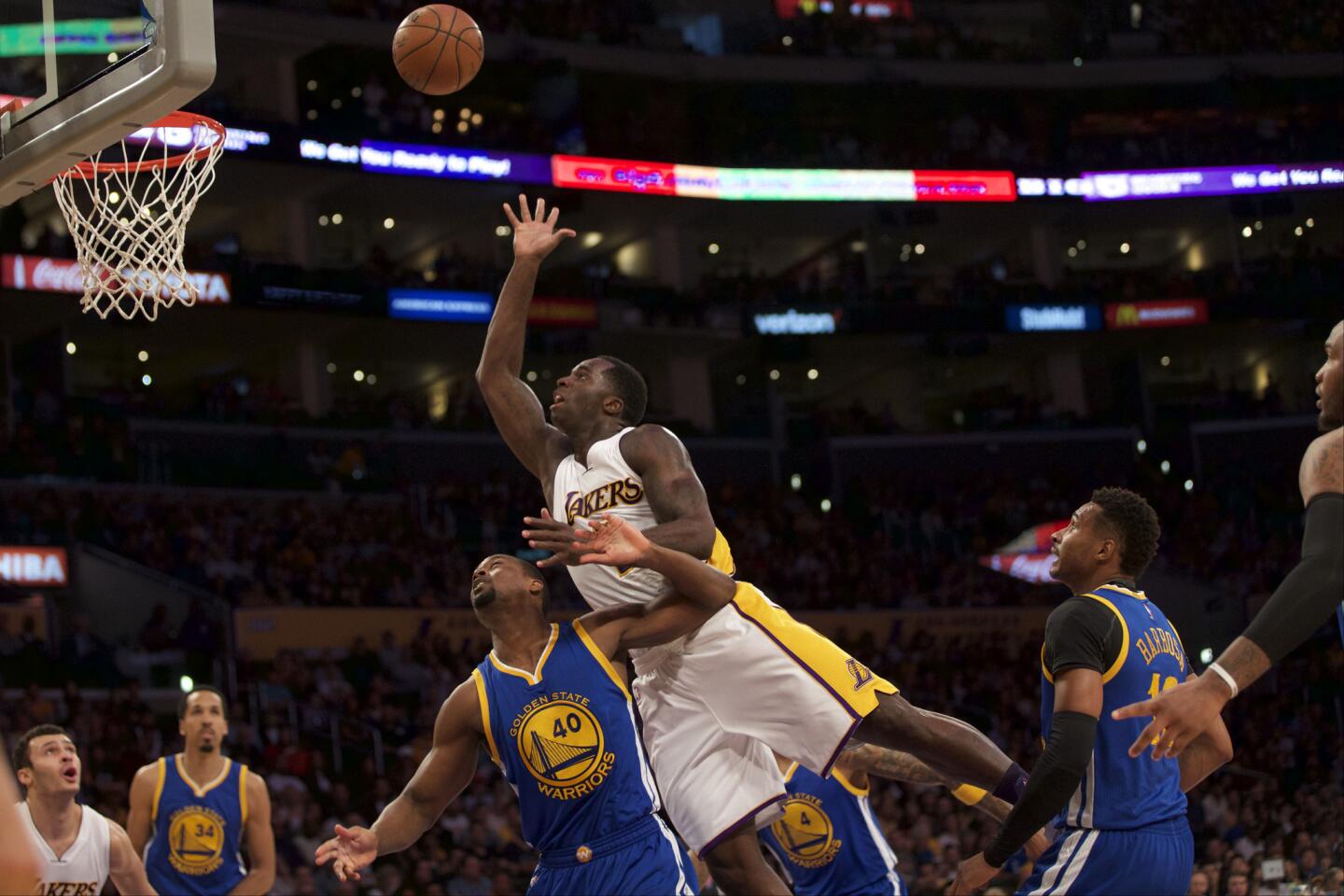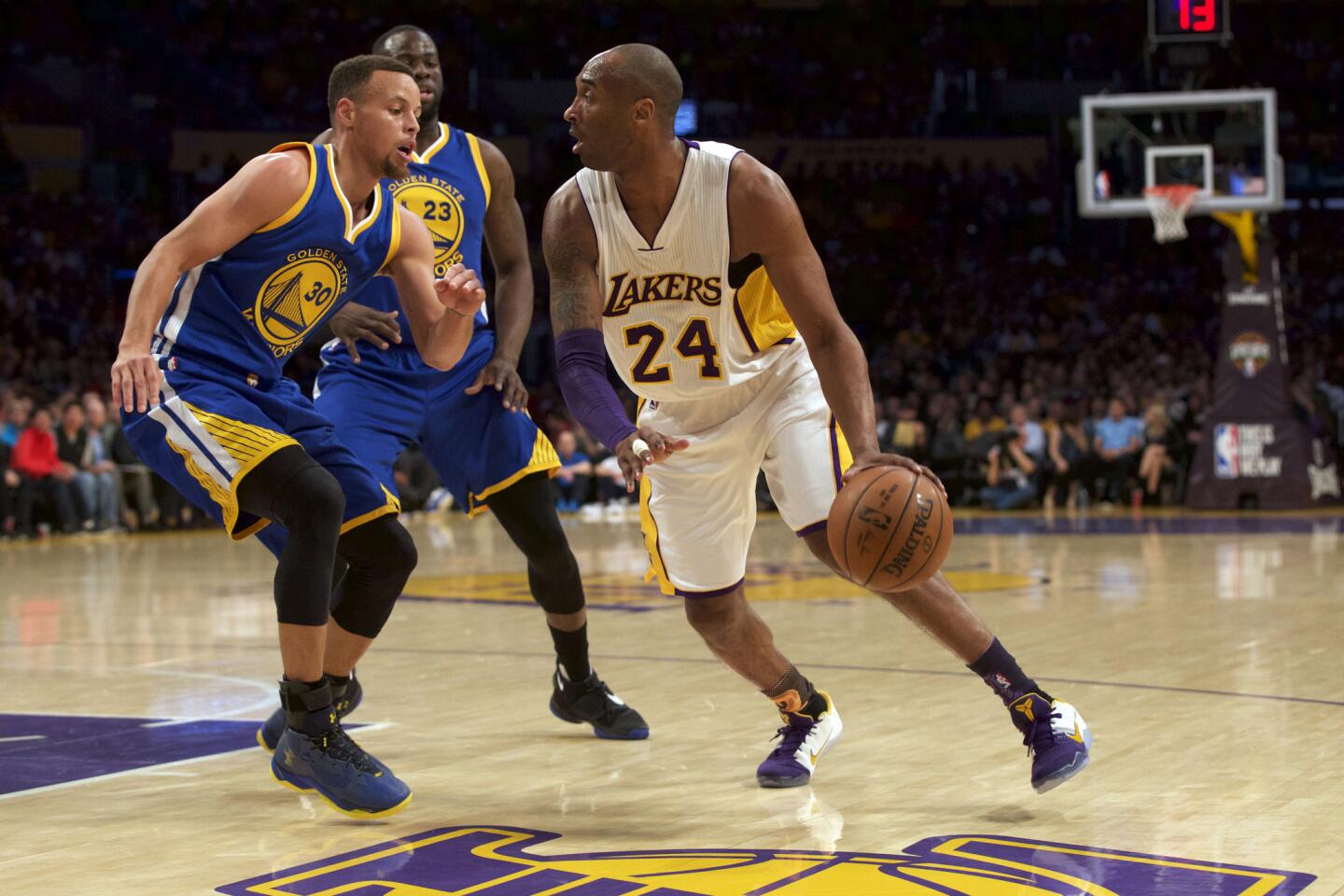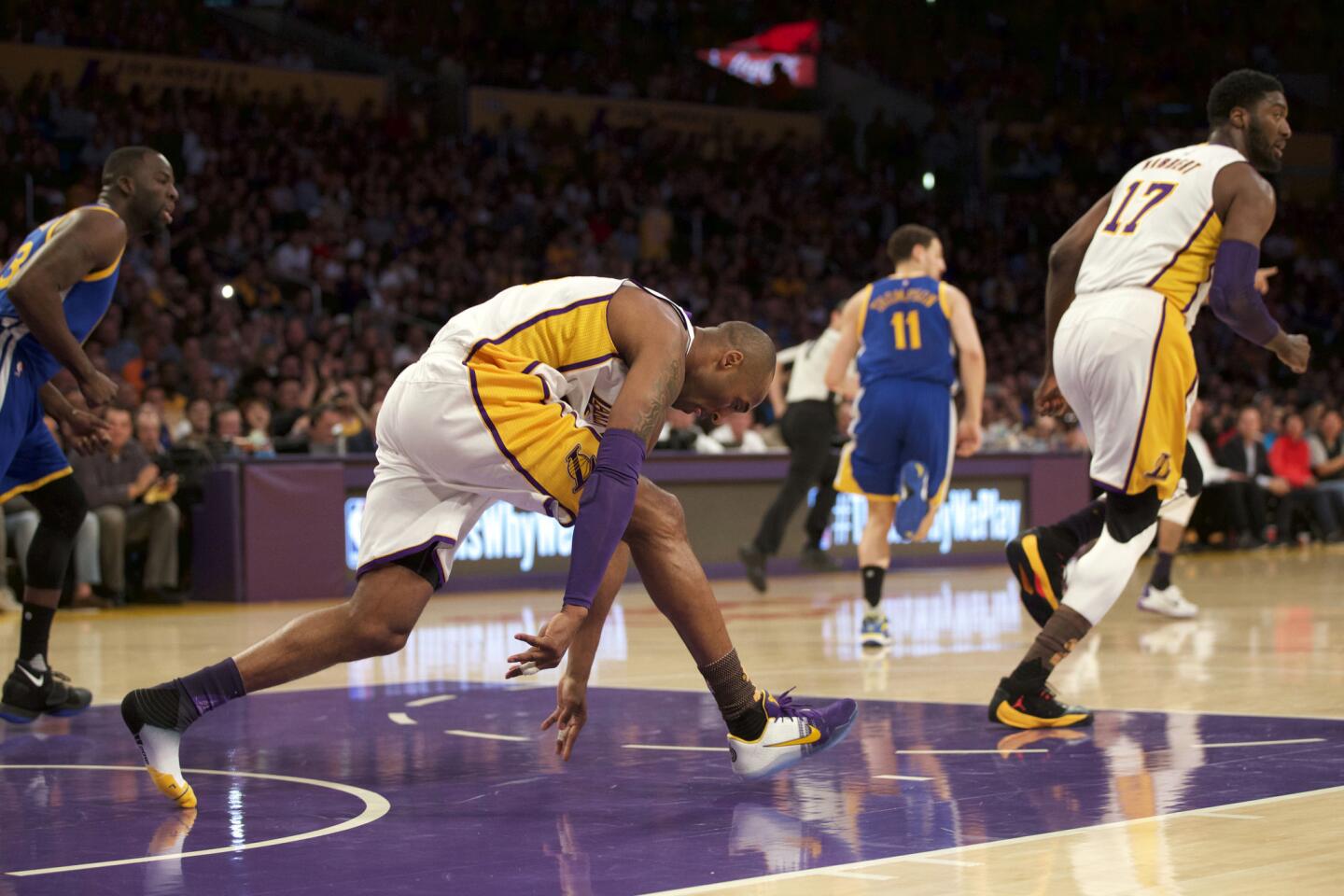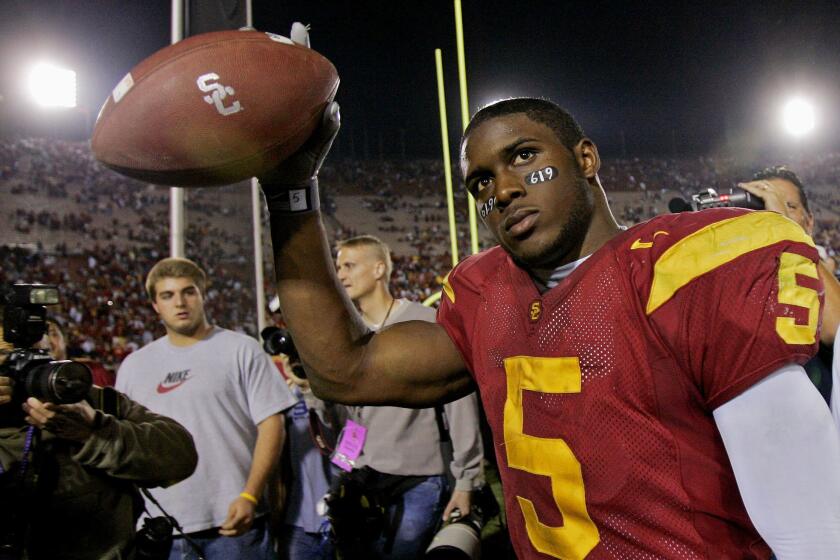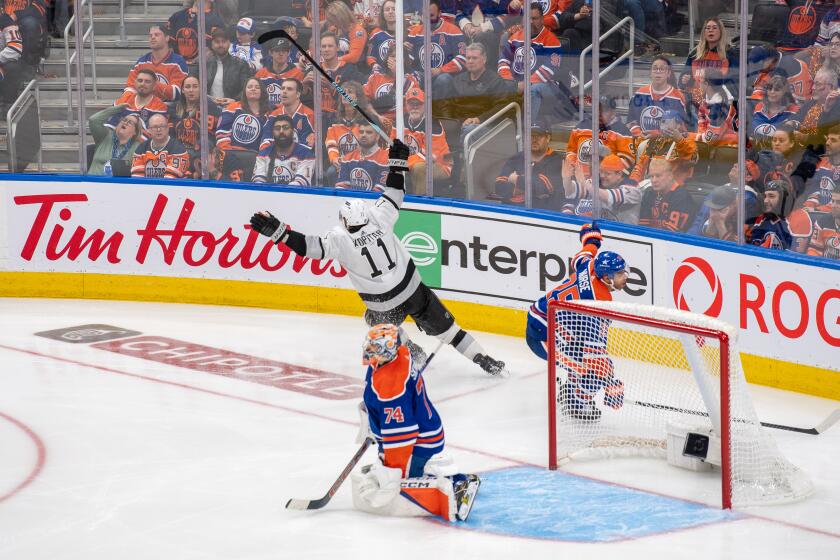Column: Golden State Warriors’ winning ways show how NBA basketball has changed
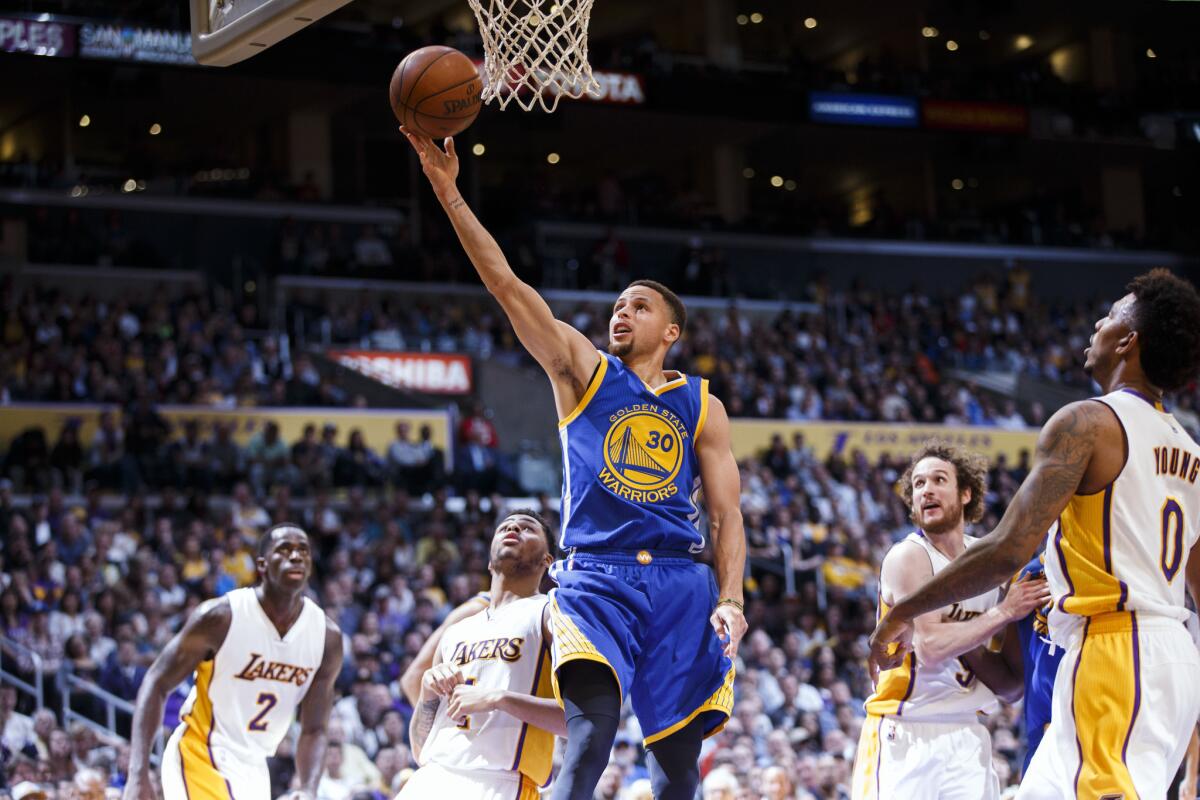
Warriors guard Stephen Curry drives to the basket as the Lakers defense looks on during the second half of a game on March 6 at Staples Center.
As surprising as it was to watch the Golden State Warriors get blown out by the last-place Lakers, there is a simple explanation for what happened Sunday at Staples Center. The mystery is that it isn’t happening more frequently.
Teams dependent on long-range shooting are bound to play such games. Only the Warriors almost never have them.
The defending NBA champions are 56-6 — the best record the league has ever seen through 62 games.
They remain on track to break the single-season record for victories of 72, set by the Chicago Bulls in 1995-96. And their win Monday night over the Orlando Magic extended their home winning streak to a league-record 45 games.
“We haven’t played well every night — we haven’t brought our A-plus game — but we found different ways to win,” said Stephen Curry, the league’s reigning most valuable player.
Their record isn’t the only indication the Warriors are a once-in-a-generation team. Another obvious sign is how a few old timers are straining to find reasons to dismiss them.
Hall of Fame guards Oscar Robertson and Isiah Thomas recently caused a stir by saying that substandard perimeter defense is the norm in the league these days and is a big factor in Curry’s success.
The criticism sounded familiar to James Worthy, one of the stars of another high-scoring, flamboyant team led by a mold-breaking point guard.
The Showtime Lakers.
“Magic [Johnson] came and created a whole ‘nother style of play, which was fast-tempo,” Worthy said. “A lot of people didn’t see the fundamental, blue-collar, Celtic-type game that they were used to. It wasn’t accepted right away.”
Worthy’s recollections are a reminder that athletes of every period are subjected to skepticism and silly cross-generational comparisons.
Athletes evolve. Tactics change. Rules do, too.
Imagining how an athlete might perform under a completely different set of conditions is fun but pointless. Theories can never be tested.
Questions similar to the ones asked about Curry and the Warriors could be asked in any sport.
For example, how would Clayton Kershaw do if he had to pitch every four days, as Sandy Koufax did? But how would Koufax do if opposing hitters were armed with scouting reports detailing his tendencies?
“It’s just different,” Warriors Coach Steve Kerr said. “Whether it’s better or worse or whatever, it doesn’t really matter.”
There’s no question the Warriors are a product of their times, their style a response to rule changes at the turn of the millennium designed to promote offense.
Perhaps most notable is the elimination of the rule that prevented zone defenses.
“The rule change, defensively, never gets talked about enough, in terms of why the game has changed,” Kerr said. “It would be much harder to post up all those dominant big men from the ‘80s and ‘90s because you can’t isolate them. You’re allowed to zone up and double team without the ball.
“Those are dramatic changes that affect our game and that’s one of the reasons you see the spacing and so much three-point shooting now. Teams have adapted to the rules.”
Kerr downplayed the notion that he is some kind of visionary, and that his team is reinventing the game. In his view, the Warriors are part of a tradition started last decade by the Phoenix Suns, when Mike D’Antoni was the coach and Steve Nash the point guard.
“I think the league changed dramatically with Mike D’Antoni and the Nash teams,” Kerr said. “People started to copy Mike’s formula, including, in many regards, Miami and San Antonio. I think that whole evolution really impacted me.”
The concepts were adjusted to fit the Warriors’ personnel, which has translated into a style based on constant movement from a group of well-rounded players, including All-Star forward Draymond Green.
What makes the Warriors particularly hard to defend is that Curry and Klay Thompson are threats to shoot from practically anywhere. They rank first and second in the league in three-pointers made, with Curry’s 301 establishing a single-season record. Curry, who is averaging a league-leading 30.7 points per game, has made 46.1% of his shots from behind the arc, including many from a few steps inside of half court.
“Steph is a revolutionary force in the league,” Kerr said.
Do people realize that?
Kerr chuckled.
“I would hope they would,” he said. “When a guy makes 40-foot shots three straight games, you would hope that people would recognize this is not normal. Nobody has ever done this.”
Robertson and Thomas implied the slender 6-foot-3 point guard would be slowed in a more physical environment — defenders are not allowed to have as much physical contact with opponents as they used to — but Worthy isn’t as certain.
“He still would have been Steph Curry, because he’s more dangerous without the ball than he is with the ball,” said Worthy, who is a studio analyst for Time Warner SportsNet.
As for the Warriors offense as a whole, Worthy is again reminded of the Showtime-era Lakers.
“The fluidity of their game, the motion of their game, it may look wild and out of control, but it’s so orchestrated,” Worthy said. “. . . They out-execute. They out-defend. I could see if it was just offense, but they out-defend everybody, too.”
What eventually changed the perception about the Showtime Lakers was the number of championships they won. It could be the same for the Warriors.
“You can’t dismiss accomplishments,” Worthy said.
Follow Dylan Hernandez on Twitter @dylanohernandez
More to Read
Get our high school sports newsletter
Prep Rally is devoted to the SoCal high school sports experience, bringing you scores, stories and a behind-the-scenes look at what makes prep sports so popular.
You may occasionally receive promotional content from the Los Angeles Times.


